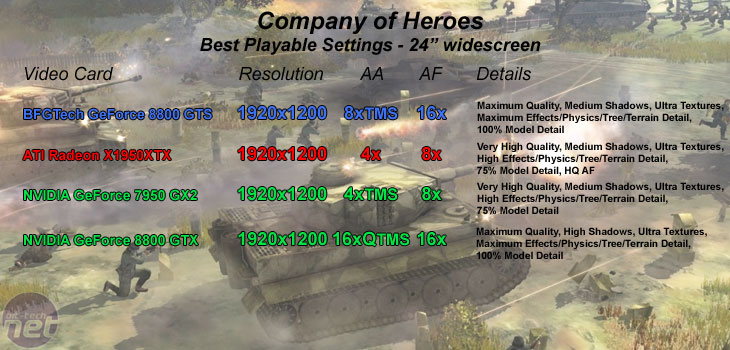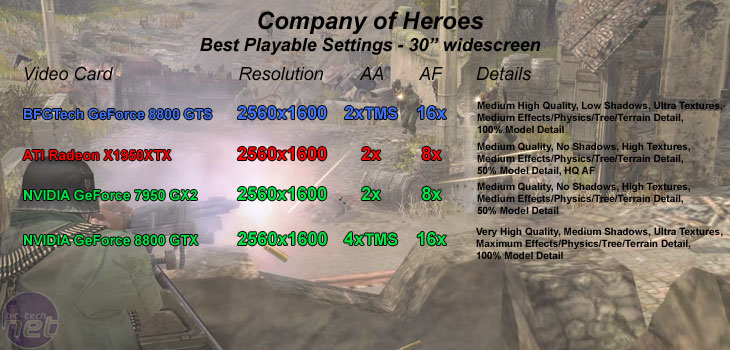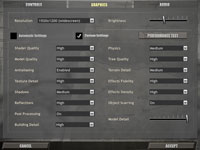
Company of Heroes:
Publisher: THQWe used the full retail version of Company of Heroes patched to version 1.3.0. It's touted as one of the best real-time strategy games of all time. Not only is the gameplay incredibly good and immersive, the graphics engine is simply stunning, making extensive use of post processing and advanced lighting techniques in the fully destructible environment. It's also scheduled to get a DirectX 10 update sometime after the launch of Windows Vista.
The graphics already look superb, but with the additional performance benefits and image quality enhancements that DirectX 10 will bring, we're expecting it to look even better than it does now. Relic tells us that it plans to make extensive use of the geometry shader, with the addition of things like point shadows and also fuzzy grass support too. By fuzzy grass, Relic means grass that will have micro displacements that break up the detail in the base terrain texturing.
Relic also plans to leverage some of the other benefits to DirectX 10, to improve performance with more graphical features turned on. The developer's plan to add more detail into the world with more smaller object details in the world. Of course, all of these will react with the world and will be fully destructible like every other element in the Company of Heroes world. For our testing, we played a five-minute run through from the beginning of the Normandy level. There's heavy use of water, lighting, explosions and also masses of vegetation during the run through and it represents a 'typical' portion of single player game action.
________________________________________________________________________________
24" widescreen gaming:


Both the Radeon X1950XTX and GeForce 7950 GX2 were capable of similar playable settings, with the GeForce 7950 GX2 delivering a slight gameplay advantage in the form of transparency multisampling. Texture shimmering wasn't much of a problem on the 7950 GX2, and the massive performance hampering and image quality bugs are resolved with version 1.3.0.
________________________________________________________________________________
30" widescreen gaming:


The Radeon X1950XTX and GeForce 7950 GX2 performed fairly similarly at 2560x1600, despite the 7950 GX2 being the faster card at 1920x1200. We had to turn shadows off, and reduce texture quality from ultra to high in order to maintain decent frame rates. We also had to reduce model detail to 50%, which lowered the immersiveness somewhat - models were rendered at a lower resolution, with noticeably less detail showing on tanks and vehicles in particular.

MSI MPG Velox 100R Chassis Review
October 14 2021 | 15:04









Want to comment? Please log in.